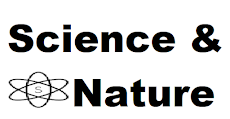In a historic moment for space exploration, the James Webb Space Telescope (JWST) has captured its first actual image and in-depth atmospheric readings of the exoplanet K2-18B — and they're as breathtaking as they are disturbing. What scientists long hypothesized about this far-off world is now firmly in the category of established facts. K2-18B is no ordinary exoplanet. It could be something much more profound — and possibly, something much more sinister.
A World Like No Other
About 120 light-years from Earth, in the constellation of Leo, K2-18B orbits a red dwarf star and has long fascinated astronomers for a single reason: it is inside its star's "habitable zone." That's the zone where temperatures are just right for liquid water to be able to exist — a requirement for life as we understand it.
A discovery in 2015, K2-18B had already gained notoriety for being a strange size and mass. Roughly 8.6 times the mass of our planet, it is a "Hycean" world, a relatively new classification believed to host huge oceans under a hydrogen-rich atmosphere. With that composition, it is a strong candidate for housing life. But what JWST had to show next was a real shocker to the scientific world.
Webb's Eye Opens – And What It Saw Was Alarming
With its versatile Near-Infrared Spectrograph (NIRSpec), JWST was capable of examining the starlight that entered through the atmosphere of K2-18B. The technique enables scientists to "look" at the chemical makeup of the planet's atmosphere.
To the surprise — and mild discomfort — of all, JWST found something hauntingly familiar: dimethyl sulfide (DMS), a molecule on our planet that is nearly solely created by microbial life. DMS is not conclusive evidence of life, but it is seriously doubt-raising. There is no geological or non-biological process known to produce large quantities of DMS here on Earth. If that same principle holds for K2-18B, we could be seeing the first actual evidence of extraterrestrial biology.
Aside from DMS, the telescope also verified the existence of methane and carbon dioxide in the atmosphere of K2-18B — another indication of a water-dense, life-sustaining world.
Why This Discovery Feeds Our Fears
For centuries, humanity has gazed up into the stars with hopes of discovering life. But with the thought that we are not alone comes a peculiar duality — hope, and fear. Hope that we're part of a greater narrative, and fear of what that narrative may hold.
If K2-18B does support life, even microbial, it would be the greatest discovery in the history of science. But it also poses uncomfortable questions:
What might life be like that can thrive with a hydrogen-rich environment?
Can it possibly be intelligent?
If there is life elsewhere, how many other planets support it as well?
And if they do exist, do they know we do as well?
These aren't abstract questions anymore. They're scientific and existential ones.
Proceeding With Caution
NASA and international space agencies are responding to JWST’s findings with a mix of excitement and caution. More observations of K2-18B are planned, including follow-ups with JWST and potentially next-generation telescopes. Scientists are also urging the public not to jump to conclusions — the detection of biosignatures doesn’t equate to discovering aliens. But it does mean we’re closer than ever to that possibility.
For now, at least, K2-18B is a mystery. But with each photo that JWST returns, we're looking deeper into a universe that's considerably more alive — and maybe considerably more complicated — than we ever could have dreamed.
Final Thoughts
The James Webb Space Telescope was designed to look
farther out into space — and deeper back into time — than any other telescope
ever. With its first real image and data from K2-18B, it has already reshaped
our understanding of what worlds may exist beyond our own. The possibility that
life might be thriving on a planet more than 100 light-years away is no longer
pure science fiction. It’s a scientific reality that forces us to rethink our
place in the cosmos.




.jpg)
0 Comments